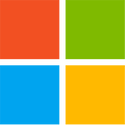
Nintendo GameCube "Space World" Prototype Listed on Ebay, Owner Seeks $100,000
Nintendo fans will be looking forward to the release of Switch Part Deux in the coming months, but a certain subset prefer to look back into the past with great fondness. Retro gaming connoisseurs have a soft spot for often unsung older hardware—the Nintendo GameCube home console is a prime example. Hardcore collectors have spent countless hours in search of special editions, unusual color variants, developer kits and prototypes. Donny Fillerup—founder and owner of Consolevariations—hit the jackpot around mid-2023; he managed to track down an extremely rare demonstration model. "Space World" units are highly-coveted—only a handful still exist—due to unique origins. Nintendo officially introduced its GameCube console at Space World 2000—a first-party-oriented annual trade show (defunct since 2001).
Vintage console curators believe that Nintendo repurposed many of its initial batch of "Space World" prototypes, but a few examples have escaped into the wild. Fillerup's ownership of a "one-of-a-kind legendary" indigo sample is seemingly coming to an end—mid-week, gaming press outlets received tip-offs regarding an eBay auction (de-listed at the time of writing). The Consolevariations boss is engaged in fundraising endeavors—according to the item's description, he wants to turn his hobby into: "a foundation business. A Gaming place where the entire family can enjoy, people can meet other people, talk with people who feel uncomfortable with other people, and make the visitors feel young again." Fillerup's asking price was $100,000, with a required $1 fee for economy-class shipping. His prized-possession sports some "battle damage" and is completely non-functional—a Consolevariations blog entry does an effective job of showcasing the "ins and outs" of this "First Announcement Model." The eBay listing did not mention any bundling-in of a matching Space World-era controller, another treasured rarity.
Vintage console curators believe that Nintendo repurposed many of its initial batch of "Space World" prototypes, but a few examples have escaped into the wild. Fillerup's ownership of a "one-of-a-kind legendary" indigo sample is seemingly coming to an end—mid-week, gaming press outlets received tip-offs regarding an eBay auction (de-listed at the time of writing). The Consolevariations boss is engaged in fundraising endeavors—according to the item's description, he wants to turn his hobby into: "a foundation business. A Gaming place where the entire family can enjoy, people can meet other people, talk with people who feel uncomfortable with other people, and make the visitors feel young again." Fillerup's asking price was $100,000, with a required $1 fee for economy-class shipping. His prized-possession sports some "battle damage" and is completely non-functional—a Consolevariations blog entry does an effective job of showcasing the "ins and outs" of this "First Announcement Model." The eBay listing did not mention any bundling-in of a matching Space World-era controller, another treasured rarity.



















